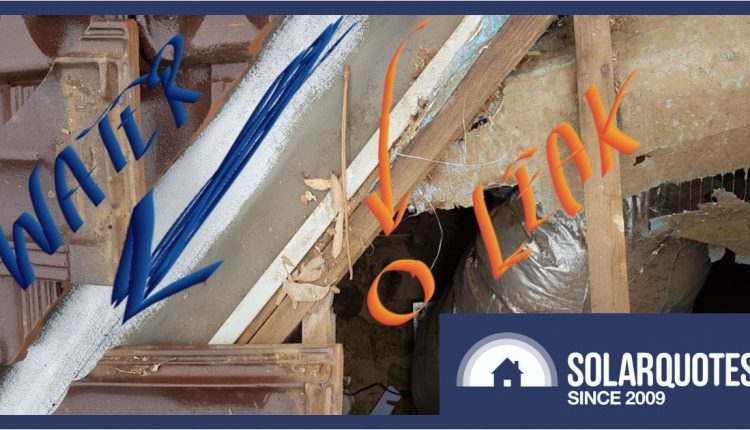Natural Causes: Solar Panels The Scapegoat For A Leaking Roof… Again
As a roofer, I’ve been sent out to investigate some mysterious drips. And too often, the problem is blamed on solar, simply because installers were the last trade on the roof.
Last week, we saw how a roofer blamed a solar installation without going to the effort of looking inside the roof space, or indeed actually finding the leaks he was employed to look for.
Today I’ll share the story of another leak that was initially blamed on innocent solar panels. This time, it turned out to be one of the wildest causes I’ve ever seen. Literally.
A Solar-Powered Home Among The Gum Trees
Picture this. Some unscrupulous gum trees shed bark, which then curls up tightly on itself to form what would be best described as a drinking straw.
If you put one of these bark tubes in exactly the right place on a roof, it will pipe water out of a valley flashing and into your insulation, where it will proceed to drip through your ceiling.
The ducted air conditioning register was dripping water
This was the cause of a leak in one of the biggest, most up-to-date houses I’d ever visited. This place had all the mod-cons, except (oddly) a television.
Most importantly, there was no immediate evidence of second-rate solar. The installation was high-quality, and so was the aftercare.
Seeking out the source.
Was Solar Responsible For The Leak?
After speaking to the customer for a run-down of the complaint and conditions under which the drip appeared, I was shown to a very convenient access door off the second-floor landing.
From there, threading my way through the roof space wasn’t too hard, and with a good headlight, it was easy to find evidence of the leak.
I poked a piece of scrap sarking from the underside out between two tiles to act as a flag (there’s a trick of the trade for you). So once I climbed up onto the topside of the roof I had a reference point and didn’t waste time investigating the wrong bit of roof.
It was hard to explain, so I took a lot of pictures.
Eucalyptus vs. A Tile Roof
Fancy landing a piece of rolled-up bark in exactly the right position to funnel water over the edge of a valley flashing. You couldn’t have planned it if you tried.
The real culprit here is not so much the eucalypt, but the cheap, bog-standard design of the valley. The single inward fold at the edge tends to get crushed underfoot and then traps leaves and other detritus.
Repairs were simple; nothing a duck bill plier can’t fix.
If I were king, this valley would have an 85° vertical fold to create a proper 20mm-deep gutter, and then a second outward fold to reinforce the edge and lap over the tile batten. It would safely carry much more water, it would be less likely to clog with leaves, and it would be immune to crushing when somebody walks over the tiles.
This valley design costs more because there are more folds, but it creates a proper channel.
A valley with an acute fold on the edge like this works well with an iron roof because the corrugated cladding has some stiffness of its own, and is supported with screws.
Tiles, however, stay in place by virtue of gravity and good luck. And, as seen here, they tend to gather a lot of rubbish.
All Leaks Can Be Costly
The glazed finish on these tiles is incredibly durable. However, despite their resilience to weather, these fired clay marvels are surprisingly fragile underfoot. Solar installers call them terror-cotta for a reason; you can break terrific numbers of them just by walking about normally.
It’s reasonable for homeowners to reach out to their solar installers if they find their roof is leaking. But it’s important to keep in mind that not every issue roof issue stems from the installation, and there might be a callout fee and a charge for labour even if they find the problem isn’t solar-related.
As we saw with Jono’s drip last week, the root cause can be an architectural shortcoming. Sometimes, as we saw here, it’s merely a case of nature’s whimsy.



Comments are closed.